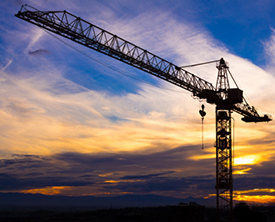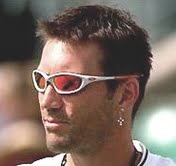Straight Arm Versus Bent Arm Forehands: Part 1
Pat Cash
Recently people have been asking me “What the best arm position on the forehand?" Here are some of the questions I get asked.
Do I get more racket head speed with a straight arm forehand? Is a bent arm forehand more consistent than a straight arm forehand?
Can a straight arm forehand cause injuries? Should I copy Nadal or Federer's forehand technique?
I didn't realize there was so much confusion about this but a Google search reveals all sorts of conflicting, wrong, and half true tennis tips from amateur coaches and self-proclaimed experts. No wonder people are confused!
Since I haven't seen any other top level coaches with an understanding of sports biomechanics explain this I'll do so in this two part article. I want to thank my good friend and colleague Brad Langevad for his help in the bio mechanic understanding of this work.
Here is what I'll be covering. What a straight arm forehand is and looks like. What a bent-arm forehand is and looks like. Also the difference between tennis style and tennis technique.
Is a straight arm forehand or a bent arm forehand better? Why copying Federer and Nadal isn't always a good idea.
Straight Arm
So, first, what is a straight arm forehand?
In tennis a straight arm forehand refers to the arm position of a player as he/she makes contact with the tennis ball. If a players arm has no bend at the elbow at the contact point then it is considered a “straight arm forehand".
The majority of pro tennis players have a bent arm on their forehands. But there are a few notable exceptions.
Roger Federer. Rafael Nadal. Juan Martín del Potro. Fernando Verdasco. Leylah Fernandez. And a few other players here and there.
The reality is that these straight arm players being the most powerful group of forehands ever seen in tennis history are tempting to emulate. There is no doubt that a clean contact at maximum stretch will create enormous power.
What does a straight arm forehand look like? Roger Federer probably has this generation's most iconic straight arm forehand. In the video below notice how straight his arm is.
His elbow has virtually zero bend as his strings makes contact with the tennis ball. Also, pay attention to how far in front of his body his contact point is (I'll come back to this later).
Bent Arm
What is a bent arm forehand?
A bent arm forehand (some people call it the double-bend forehand, depending on the grip) refers to the elbow bend a player has as she/he makes contact with the ball. So if a player has a comfortable bend at the elbow at contact point it is a “bent arm forehand".
Overall most professional tennis players on the ATP and WTA tours, including past greats, have a bent arm forehand. To name a few: Novak Djokovic, Dominic Thiem, Andy Murray, Stan Wawrinka, Fabio Fognini, Alexander Zverev, Andre Agassi, Pete Sampras, Maria Sharapova, Serena Williams. And the list goes on and on.
What does a bent arm forehand look like?
In slow motion video, you'll see that Novak Djokovic has a bent elbow at contact point. Notice where Novak makes contact with the ball in relation to his body--more on this below.
Style versus Technique
But before moving on it is important to understand the difference between style and technique. Style is an individual characteristic and can refer to things like a loopy backswing, unusual off-hand movement, a peculiar body posture, a unique stance, or how a player bounces the ball before serving.
Technique refers to the underlying biomechanical principles and body movements in a tennis stroke. The things that influence power, control, movement and injuries.
Unfortunately a lot of amateur coaches and players get these mixed up. They'll see a professional players style and try to emulate it thinking it's the secret to their success. Or they'll discount a certain player because their style isn't to their liking.
It is possible for a player to have a distinct, unique or quirky style to their tennis strokes while still having fundamentally good technique. And it's possible to look great on court while having flaws.
It's okay to have a unique style to your strokes and movement so long as it doesn't affect the biomechanics of your stroke. But to truly improve you have to see past style to the underlying biomechanics.
Straight Arm vs Bent Arm
So which forehand arm position is better? What are the benefits and drawbacks?
Like most things in tennis there is no answer that is perfect for everyone. There are always exceptions to the rule. However, from a technical perspective one forehand arm position is superior to the other in almost every way. The main benefits of a bent arm forehand are that it gives you more control and flexibility while reducing stress on your body.
Remember, you want all the movements of your forehand stroke (the kinetic chain) to work together in harmony. You are looking for the correct amount of: Rotation, Up/down movement, Side-to-side movement, Forward/backward momentum
The arm position of the bent arm forehand makes achieving the correct balance of these movements much easier. Why?
Because a bent arm forehand brings your contact point closer to your core which is a stronger, more balanced position. From here your body can twist, turn, tilt and adjust all at the same time without causing resistance in your kinetic chain. The result is a fluid, relaxed and stable forehand stroke that is less injury prone.
When developing your forehand try to emulate the arm position that players like Stan Wawrinka, Serena Williams, and Andy Murray have. Notice how all their forehands all look remarkably similar at contact point.
Drawbacks of the Straight Arm

Locking your elbow in place forces you to hit the tennis ball further in front, resulting in a weakened body position. Making contact with the ball too far in front normally leads to too much “forward/backward “movement which causes imbalances in other areas of your forehand stroke like rotation and/or side-to-side movement.
If you're doing too much of one thing you have to do less of something else. Also, a straight arm forehand places more stress on your joints which can lead to injury.
There are two main things to keep in mind when considering the pros and cons of a straight arm forehand: a straight lever and a bent lever.
A quick look at the city skyline may explain it best. Look at a crane on a construction site. As you can see, it is not a straight contraption.
A crane is designed to carry and move heavy objects. To do this it is attached to the ground (your body), has an upright beam (your upper arm), a bend (your elbow), then another beam (your forearm).
Your arm is the same. The key thing to remember is that a bent lever is more stable and has more strength than a straight one.
In part 2 of this article let's take a look at the hitting zone and see how that critical element relates to the debate.




